Mangrove Restoration in the Yucatan Peninsula, Mexico as a Nature-Based Solution
In the last 40 years, about 22% of the world’s mangroves have been lost.
Mexico has the fourth largest extension of mangroves. And 60% of them are located in the Yucatan Peninsula, where the main cause of degradation is the development of tourist and port infrastructure. To help recover these ecosystems, we’re proposing restoration actions at four sites: Sisal, Santa Clara, Dzilam and Sian Ka’an.
The main objective is to increase resilience and reduce vulnerability to the effects of climate change in coastal ecosystems, through the restoration of mangrove ecosystems via improved hydrology and planting. This is a collaboration between The Ocean Foundation, Laboratorio de Producción Primaria del CINVESTAV-Unidad Merida, and ENES-UNAM.
Jump to Sections
Project Description
In the last 40 years, about 22% of the world’s mangroves have been lost. Mexico has the fourth largest extension of mangroves and 60% of them are located in the Yucatan Peninsula, where the main cause of degradation is development of tourist and port infrastructure. To help recover these ecosystems we propose restoration actions at four sites: Sisal, Santa Clara, Dzilam and Sian Ka’an. The main objective is to increase resilience and reduce vulnerability to the effects of climate change in coastal ecosystems, through the restoration of mangrove ecosystems via improved hydrology and planting. Restoration actions will be implemented along 400 ha of mangroves (100 ha per site) and the monitoring of growth and survival of seedlings, biodiversity, avoided GHG emissions and CO2 capture.
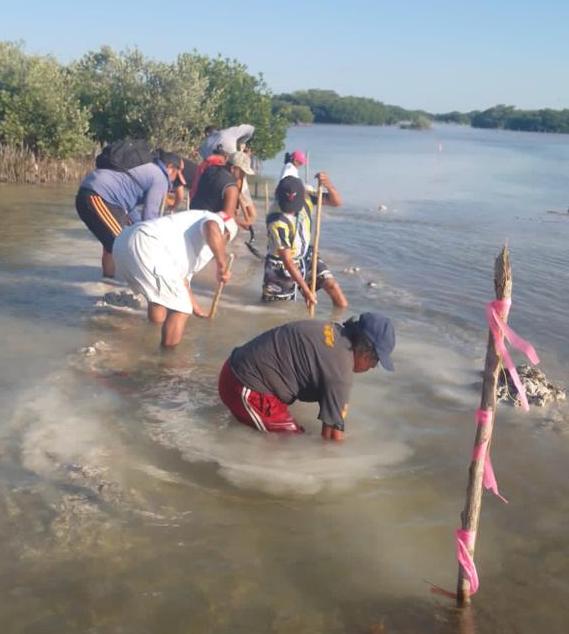
The restoration of these 400 ha of degraded mangroves in four sites of Yucatan Peninsula will contribute to enhancing blue carbon reserves and increase CO2 capture. The mangroves in these sites are important food sources as they are breeding areas for fish and shellfish, serve as protective barriers against hydrometeorological events and show promise for the development of ecological tourism and non-timber activities such as honey production. The recovery of these ecosystems will contribute to reducing the vulnerability of marginalized neighboring communities. The project will directly impact approximately 7,000 members of the communities surrounding the project sites. It should be noted that approximately 20% of local populations are Mayan-speaking communities.
Project Location
The project will be located in four locations:
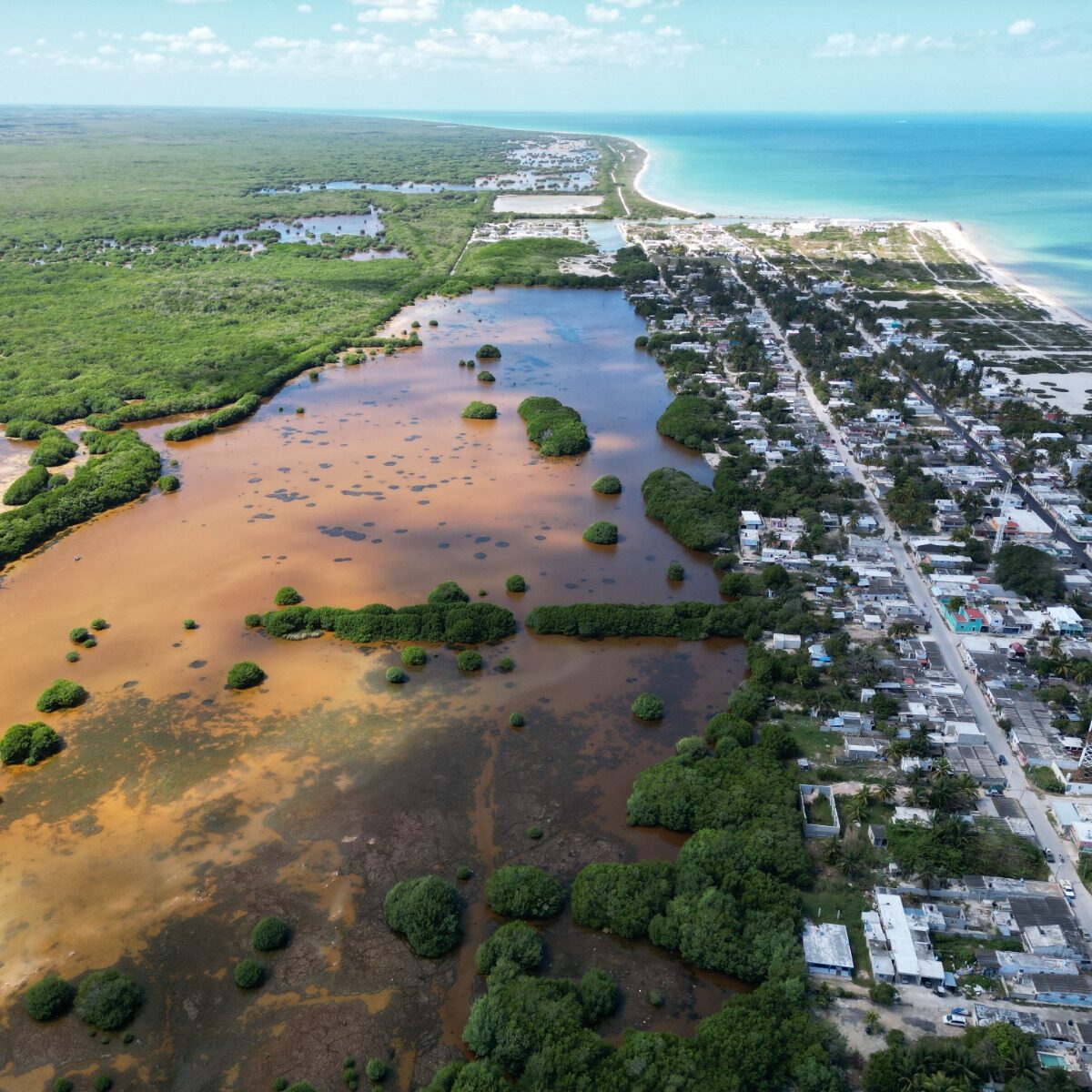
Sisal
Sisal is located in the state of Yucatán and the municipality of Hunucmá. The project area will be situated below the town on the west side of the Merida-Sisal highway (coordinates:21.161583°, -90.035150°).
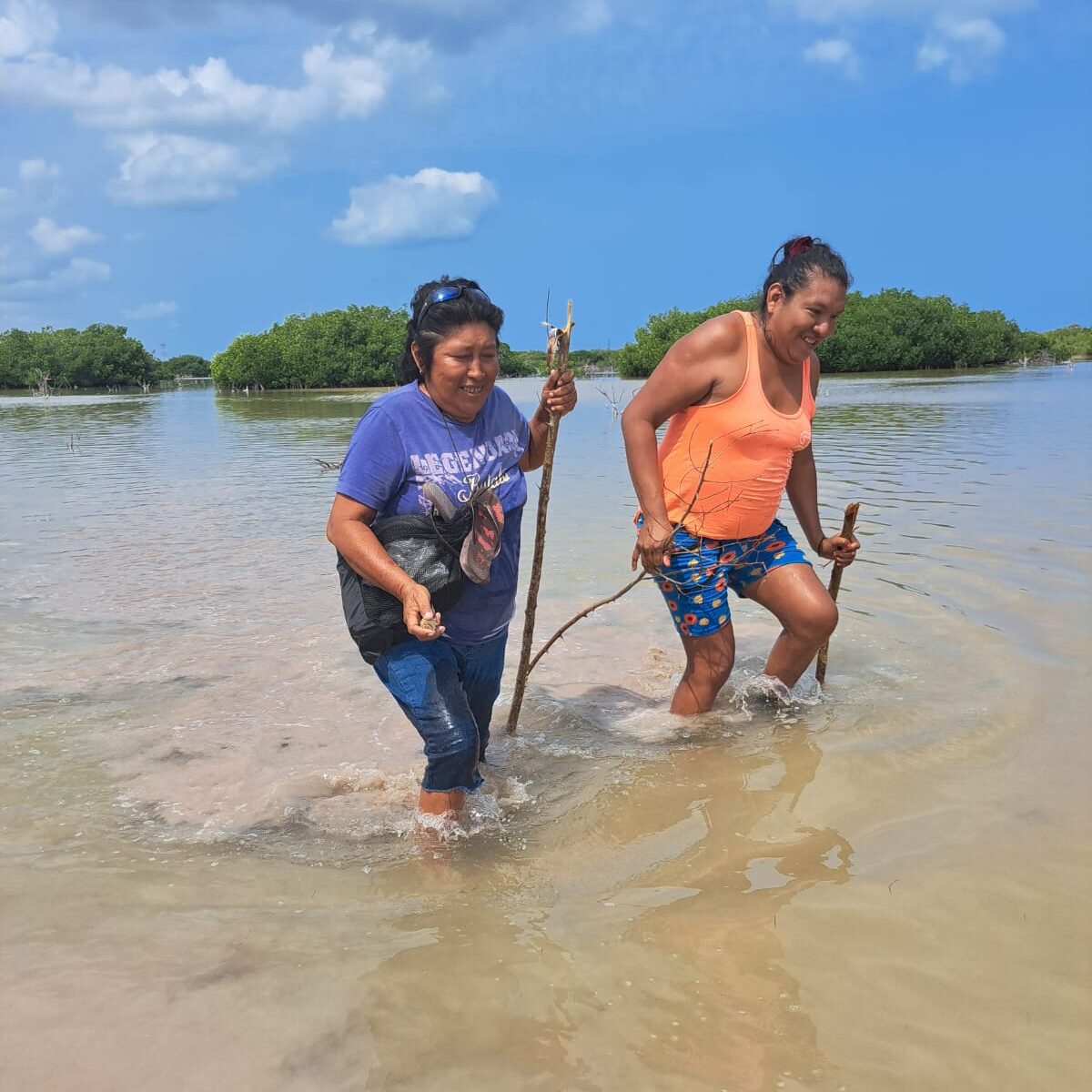
Santa Clara
Santa Clara is located in the state of Yucatán and the municipality of Dzidzantún, the project area is situated below the town and 750 m east of the road Dzidzantún-Santa Clara (21.371701°, -89.000150°).
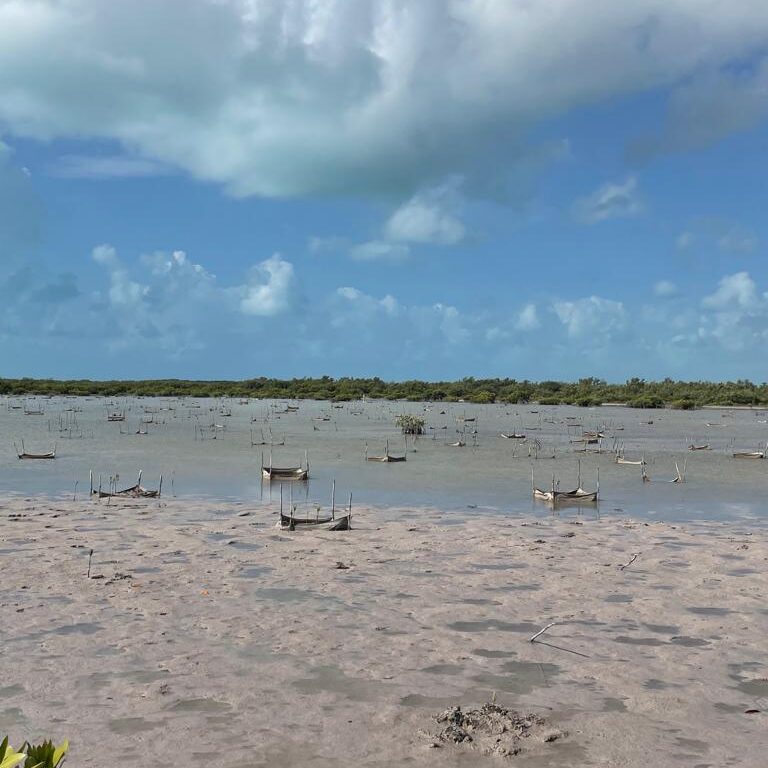
Dzilam de Bravo
Dzilam de Bravo is located in the state of Yucatán and the municipality of Dzilam de Bravo, the project area is situated 3500 m west of “Cabañas Perla Escondida de Dzilam de Bravo (21.379734°, -88.947480°).
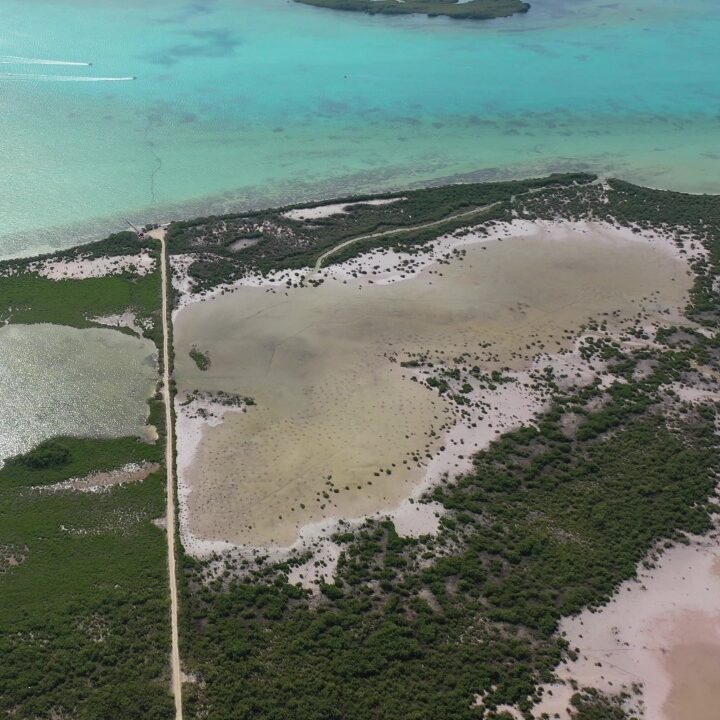
Sian Ka’an
Sian Ka’an is located in the state of Quintana Roo in the municipality of Felipe Carrillo Puerto at the end of the “Camino a El Playón” road (19.821899°, -87.500986°).
Site Selection
Surrounding communities depend on benefits that mangrove ecosystems provide and, although there are degraded mangrove areas, they still sustain biodiversity of high ecological and economic value. Likewise, restoration projects have already been carried out in these sites where new channels have been dredged, natural channels cleared and water passages cleared by community brigades to ensure hydrological function, favoring salinity, temperature and hydroperiod conditions suitable for mangroves establishment. In these sites it is necessary to create dispersal centers to raise the topographic level. Replanting is required to increase mangrove cover, recover ecosystem services, reduce the vulnerability of coastal partner ecosystems and mitigate the effect of climate change.
Size and Scale
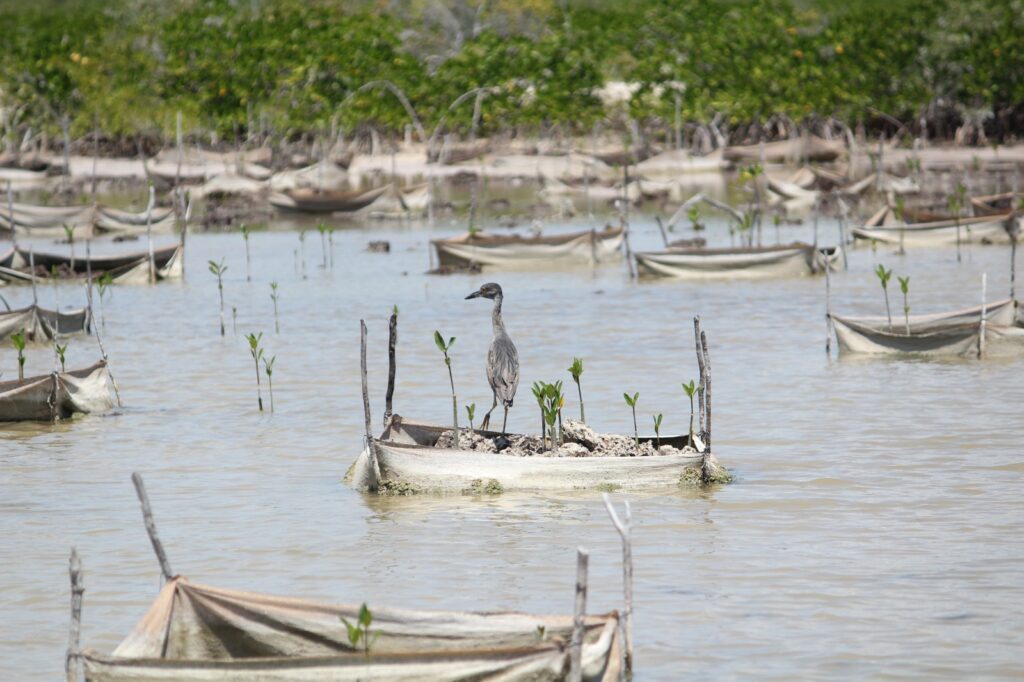
Size of the Project (In Hectares)
The degraded mangrove area in the four sites measures approximately 2,500 hectares due to the recent urbanization of coastal communities, hydrometeorological events, deforestation, road construction, among others. However, the direct intervention area of this project is 400 hectares, specifically 100 hectares in each site (Sisal, Santa Clara, Dzilam de Bravo and Sian Ka’an). It is expected that the project area will be expanded in the future to continue the restoration of degraded mangroves.
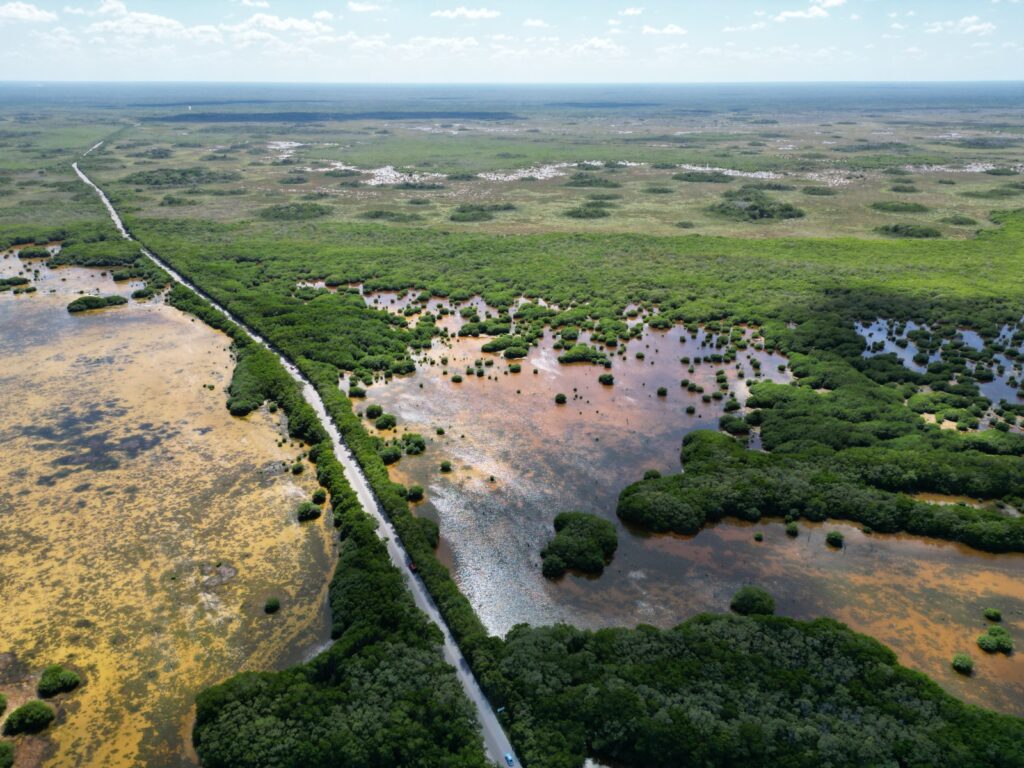
Scale (Trees)
In terms of trees planted, 12,000 trees are expected to be planted at the four study sites, or 3,000 trees per site (Sisal, Dzilam, Santa Clara, and Sian Ka’an). In addition to the directly reforested trees, it is expected that as a result of the hydrological rehabilitation carried out previously, the density of trees can recover and reach densities close to the conserved mangrove reference sites, reaching densities of up to 3000 ind/ha in 10 years.
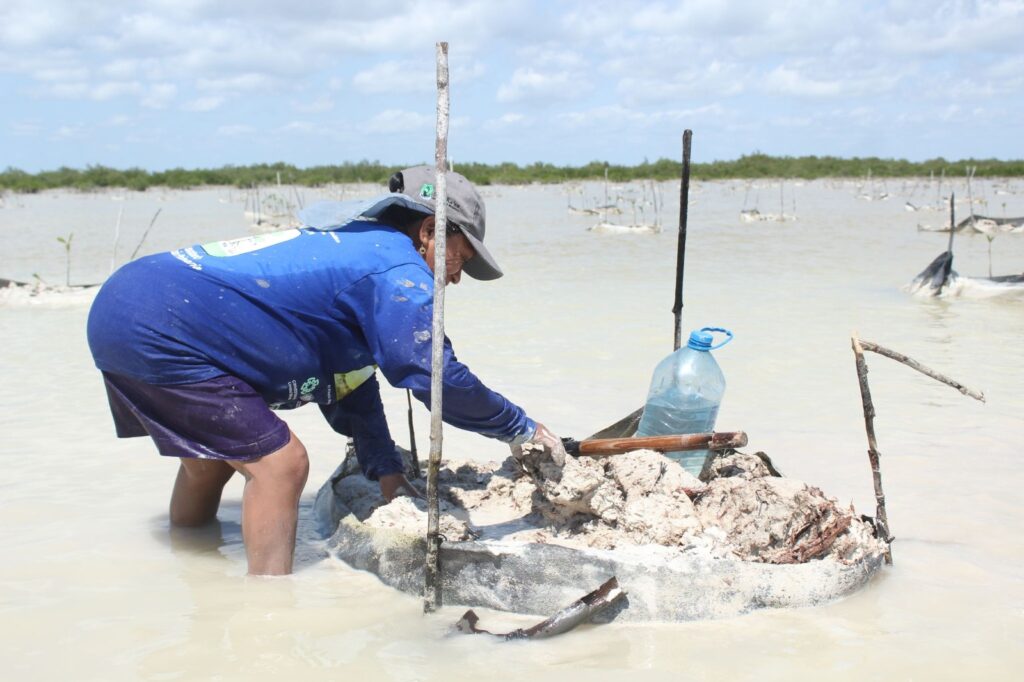
Scale (Tree Density Over Time)
Based on previous restoration sites in the Yucatan Peninsula, a tree density of approximately 1,000 ind/ha is expected at five years and 3,000 ind/ha in 10 years. These densities are expected to vary depending on each site due to the particular mangrove conditions at each of the four sites.
Timeline
The restoration activities will begin on January 24 and end on December 31, 2027.



